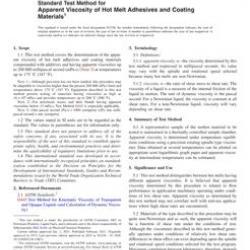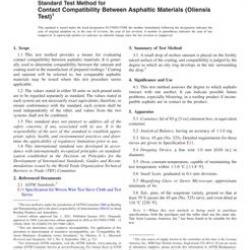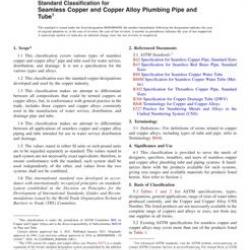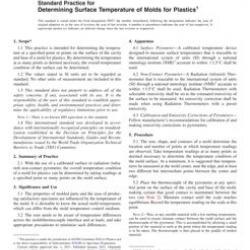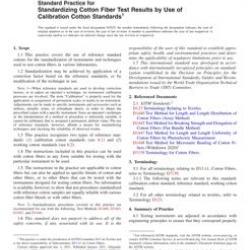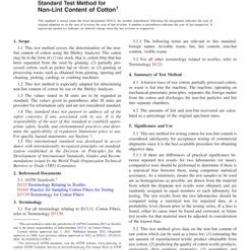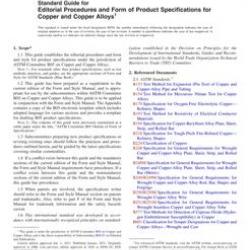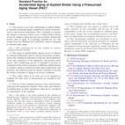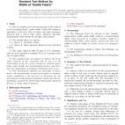No products
ASTM D2168-10(2018)
ASTM D2168-10(2018) Standard Practices for Calibration of Laboratory Mechanical-Rammer Soil Compactors
standard by ASTM International, 07/01/2018
Full Description
1.1These practices for the calibration of mechanical soil compactors are for use in checking and adjusting mechanical devices used in laboratory compacting of soil and soil-aggregate in accordance with Test Methods D698, D1557, Practice D6026, and other methods of a similar nature that might specify these practices. Calibration for use with one practice does not qualify the equipment for use with another practice.
1.2The weight of the mechanical rammer is adjusted as described in 5.4 and 6.5 in order to provide for the mechanical compactor to produce the same result as the manual compactor.
1.3Two alternative procedures are provided as follows:
| Section | ||
| Practice A | Calibration based on the compaction of a | 5 |
| Practice B | Calibration based on the deformation of a | 6 |
1.4If a mechanical compactor is calibrated in accordance with the requirements of either Practice A or Practice B, it is not necessary for the mechanical compactor to meet the requirements of the other practice.
1.5The values stated in inch-pound units are to be regarded as the standard. The values given in parentheses are for information only.
1.5.1It is common practice in the engineering profession to concurrently use pounds to represent both a unit of mass (lbm) and a force (lbf). This implicitly combines two separate systems of units; that is, the absolute system and the gravitational system. It is scientifically undesirable to combine the use of two separate sets of inch-pound units within a single standard. This standard has been written using the gravitational system of units when dealing with the inch-pound system. In this system, the pound (lbf) represents a unit of force (weight). However, the use of balances or scales recording pounds of mass (lbm) or the recording of density in lbm/ft shall not be regarded as a nonconformance with this standard.
1.6This standard does not purport to address all of the safety concerns, if any, associated with its use. It is the responsibility of the user of this standard to establish appropriate safety, health, and environmental practices and determine the applicability of regulatory limitations prior to use.
1.7This international standard was developed in accordance with internationally recognized principles on standardization established in the Decision on Principles for the Development of International Standards, Guides and Recommendations issued by the World Trade Organization Technical Barriers to Trade (TBT) Committee.






